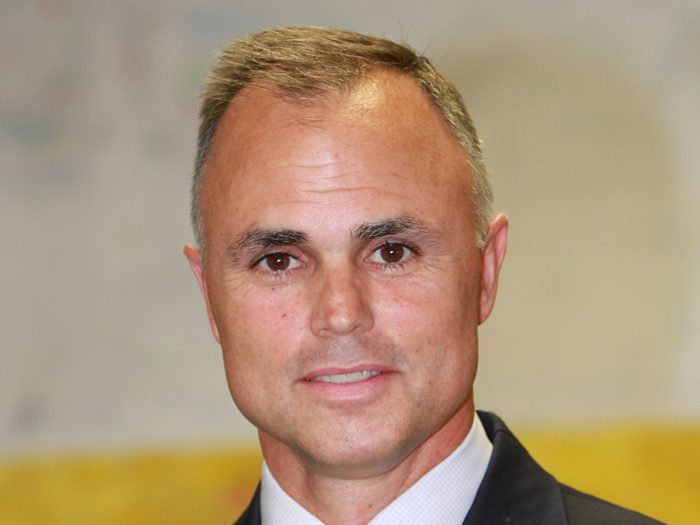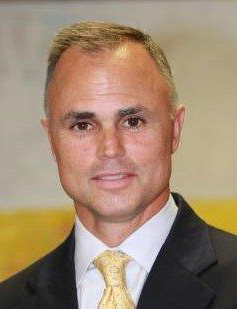9 Questions for Berkshire Hathaway Specialty’s David Valzania

David Valzania joined Berkshire Hathaway Specialty Insurance in 2016 after more than 25 years in the commercial insurance space, including stints with AIG and Marsh.
He’s charged with developing BHSI’s multinational capabilities in order to create multinational insurance programs for customers operating in multiple countries around the globe.
In October, Risk & Insurance® caught up with Mr. Valzania to discuss the challenges and opportunities in multinational coverage.
Risk & Insurance: David, you’ve worked in a variety of positions in insurance, from personal lines carrier executive to commercial insurance brokerage executive. What is it about working on multinational business that gets your blood moving at this stage in your career?
David Valzania: I know of no part of the insurance industry which can be more challenging than the multinational one, because you’re going to face everything that you would face in any one country, and with any one product line, but then scaled across the globe.
You’re also going to deal with every function that an insurance company has to offer, whether that’s actuarial, legal, compliance, claims etc. What we do touches every part of the company, so there is never a dull moment.
You might have two customers in the same industry, similar risk profiles, but they’ll be in slightly different countries. That means they’ll have a different risk appetite and a different approach to how they want to handle those risks as well as different service requirements.
You’re learning something every day, you’re solving complex problems every day, and that’s just inherently very stimulating. I think everyone gets to a point in their career where they say “I need something intrinsically that’s going to really get my juices flowing,” and this is it.
I think this is the peak of the mountain, if you will, in terms of stimulation and challenges, which is why I love it.
R&I: Everyone we talk to about multinational mentions how challenging creating a multinational insurance program is. Inevitably, insurance professionals place legal and regulatory compliance at or near the top of that list of challenges. How substantial is regulatory risk in multinational insurance?
DV: It’s huge. Every jurisdiction has its own regulatory framework – governmental, legal, tax or insurance, and they’re all a bit different.
In the European Union today, there are some consistencies, but apart from that, you’re going to find that it’s a patchwork from one country to another.
Those regulations can change, with little notice, so staying out in front of that, and having confidence that your insurance program is put together in a compliant manner, is really important.
R&I: How do make sure that you and the customer are on the same page in terms of regulatory risk and that you’re keeping up with those changes?
DV: It’s about starting early and coordinating with the insured’s broker, to make sure we understand the customer’s needs. It’s very important to have that dialogue, and to be clear on the intentfrom theoutset.
We can tell them what our views of the regulatory requirements are and certainly what’s compulsory and what we feel would be desirable. But only the customer knows what their internal finance appetite and mechanism is.
Only they know what their regulatory risk tolerance is and what lender requirements may be incumbent on them in different places and what vendor and/or supplier requirements they might face in different jurisdictions.
So, done properly, start the process early, and learn from the customer about what they need and what they require in terms of their global program and the necessary local placements.
R&I: In placing local coverage, we understand that there are also differences in the requirements in different countries. Some jurisdictions will insist that you use local paper, others are less restrictive. In the jurisdictions where you need a local partner, how do you go about choosing partners and making sure they are the right partners?
DV: A big goal of ours today is to build that direct partner network, selecting those partners very carefully and making sure that they’ve got the financial capability to weather whatever is going to come their way.

David Valzania, head of multinational business insurance, BHSI
They have to have a very good reputation in their local market and they have to have the product offering that we need. They also need to have the same commitment to service that we have.
We also want to reinsure all of these local partners to the degree that we can. We want our customers to have the benefit of BHSI’s financial strength in every market, even if we’re standing behind a local partner.
Some regulators will require that our local partner be the company handling the claim. But to the greatest extent possible, we want to be the ones who are engaged and handling the claim to whatever extent we are permitted.
We’re very serious about partner selection, the due diligence that we go through in appointing them, and making sure they’ll work as an extension of our company.
R&I: How do you keep up with the changing regulations and the other constantly shifting data sets that you need to manage, as you operate in all of these different jurisdictions?
DV: We’ve got a data base that we manage. It’s a task, but it’s not an unmanageable task. There are between 200 and 225 countries in the world where customers that we would want to insure are doing business. But there are probably 65 to 70 countries that come up all of the time.
These regulatory and operational trends that I’m talking about, it’s not that they change that frequently. For example, there are many African countries that are trying to grow indigenous insurance markets. But there is less need for local policies there today than there might be in the developed economies of Asia, Europe and Latin America.
We have an intelligence center that we keep all of this information in and one person who is responsible to really look after that and update it as necessary.
R&I: Let’s talk about distribution. What’s your approach to building a distribution network as BHSI takes aim at being a multinational insurance provider?
DV: When BHSI started in the U.S. there was an intentional strategy to have a limited number of distribution partners. That makes good sense, because if you open your doors to the world and try to deliver a high level of service on day one, then you’re likely going to disappoint someone.
Our team works with brokers that want to treat us as a significant trading partner. We’re continuing with that today in our multinational approach. In my role, that’s very helpful, because they tend to be the brokerages with international capabilities.
R&I: Are there areas where your approach to distribution differs?
DV: In regions of the world where we are smaller and the insurance market is smaller, yes, we haven’t needed to be as restrictive. So, we do see more diversity in terms of the brokers that bring us business there.
I like to say there is an American view of the world and then there’s an international view of the world. The rest of the world is very multinational in its orientation.
The brokers that we deal with overseas, while they are more numerous and varied, they’re all very multinationally-oriented, and they bring us business that by its nature, is multinational.
R&I: For carriers that do wish to do business in multinational insurance, beyond admittedly important measures such as balance sheet strength and claims handling, how can they differentiate themselves?
DV: To be honest, it hasn’t been a high bar in terms of the standard of service and execution in the multinational space.
I don’t mean to slight the market, but it is a very challenging thing to execute on multinational programs. It’s hard enough to execute on business well in the U.S., but you add a couple hundred more countries, it makes it that much more difficult.
The whole insurance market is a bit arcane in how it operates, and it’s not something that takes change easily. If you come in and say that you are an organization that is very customer focused, that you’re going to proceed very thoughtfully, and not race to get to some level of growth, then you can, I think, carve out a pretty effective niche.
R&I: Any final thoughts, David, on this role and your approach in multinational?
DV: BHSI, as many people know, has grown rapidly and added a lot of offices in international locations over the past few years.
I’ve been asked to help ensure this growing international presence will function as a committed, effective multinational insurer for customers.
So, it’s really bringing our team together in the places where they already work, and then being thoughtful about adding outside partners to provide our customers with local policies and coordinate a program in the countries where they need that. &










